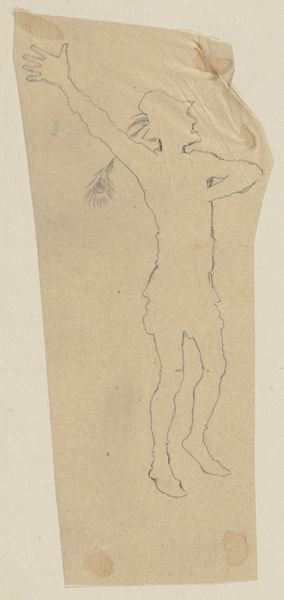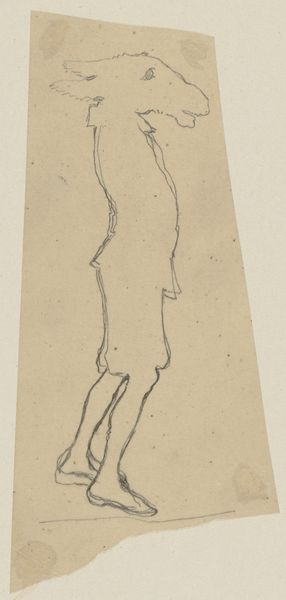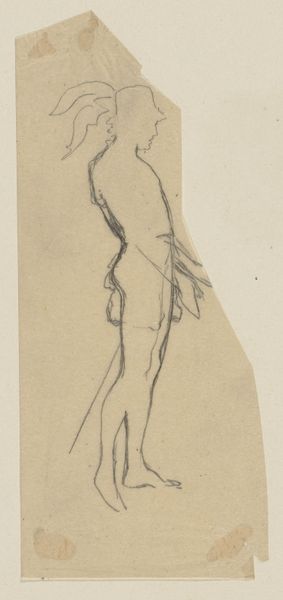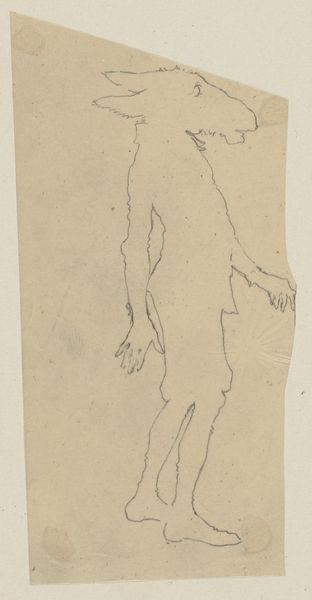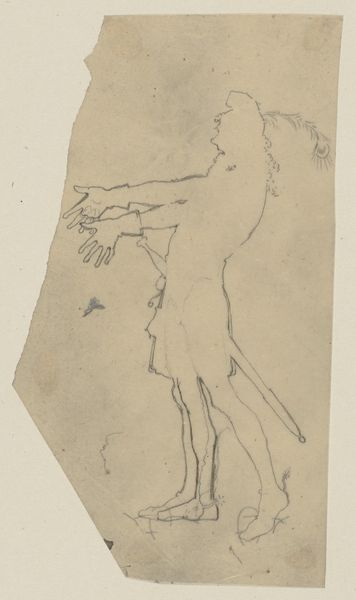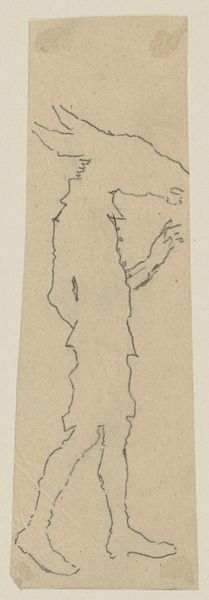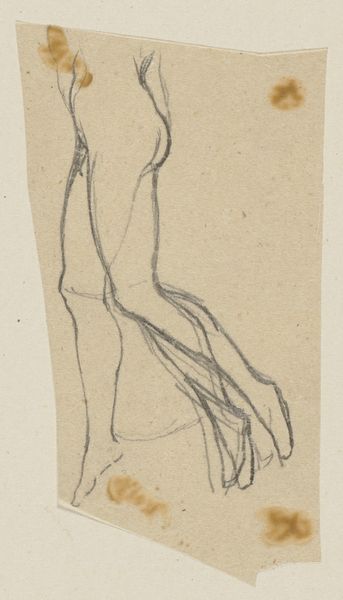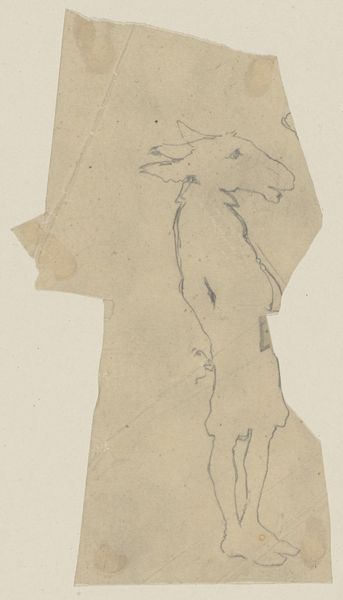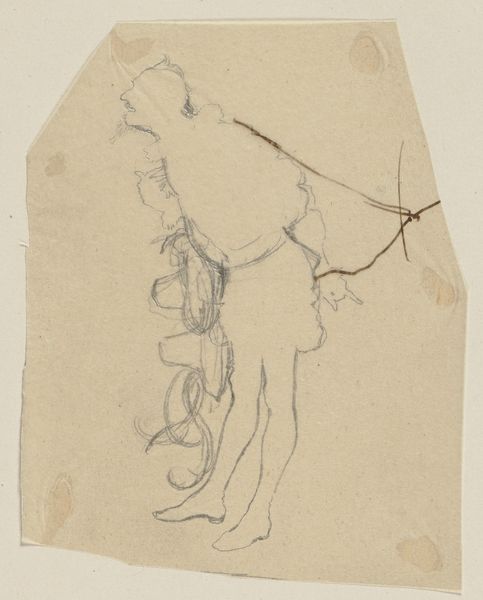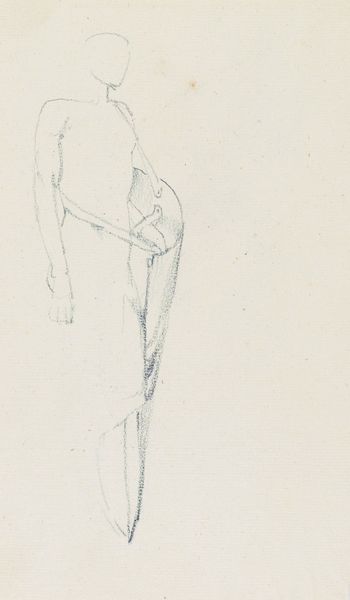
Nick Bottom mit Eselskopf, den Zeigefinger ausgestreckt, stehend, nach links c. 1867 - 1868
0:00
0:00
Copyright: Public Domain
Editor: This intriguing graphite drawing, "Nick Bottom mit Eselskopf," created by Paul Konewka around 1867-1868, depicts Nick Bottom with a donkey's head, extending his finger. It’s unsettling, really. What are your thoughts when you look at it? Curator: I see this drawing as reflecting the anxieties of the mid-19th century, particularly regarding social roles and the blurring of boundaries between humans and animals. The Romantics were fascinated with the grotesque. How might this resonate with contemporary audiences accustomed to satire? Editor: So you're saying it speaks to a kind of fear of transformation? Curator: Precisely. Konewka's choice to illustrate this particular scene from Shakespeare places it within a broader cultural conversation about identity and societal expectations, and I believe this links to the influence of Romanticism. How might a modern viewer, saturated with CGI transformations, perceive the same character differently than Konewka's original audience? Editor: Well, for a modern audience, it could read as body horror or perhaps a playful critique of someone’s ego… or "ass-like" behavior! Curator: The term ‘romanticism’ almost sounds cliché today, but perhaps you are on to something - this tension between horror and humor speaks to our cultural values now. Konewka and other artists of his era found the intersection of these opposing forces – human and animal, funny and scary - a key source of commentary on the era they lived in. I wonder about how people consumed illustrations then. What venues were available, how widespread were these artworks, what purposes did they serve? Editor: That is really helpful; I now view it less as just a whimsical drawing and more as a reflection of broader cultural anxieties about identity. Thanks for pointing that out. Curator: Likewise. Thinking about where these illustrations appeared definitely highlights the purpose of such an artwork.
Comments
No comments
Be the first to comment and join the conversation on the ultimate creative platform.

